Eros adorns one of our objects on display in the National Museum of Scotland. To celebrate Pride Month, Queer Classicist Joe Watson explores the queer themes surrounding the Greek god in the ancient world and reflects on what seeing Eros could represent to queer museum visitors today.
Language evolves and changes all the time and this blog reflects that. This glossary of terms can help.
I want you to imagine that you are walking around Level 5 of the National Museum of Scotland. In the Artistic Legacies gallery, you see a Greek pot from southern Italy in the 4th century BCE, labelled as a lebes gamikos. The pot depicts Eros, the god of love and sex in Greek mythology. Eros is shown naked, with ornate wings, jewellery wrapped about his body and what appears to be a string of pearls in his hands.
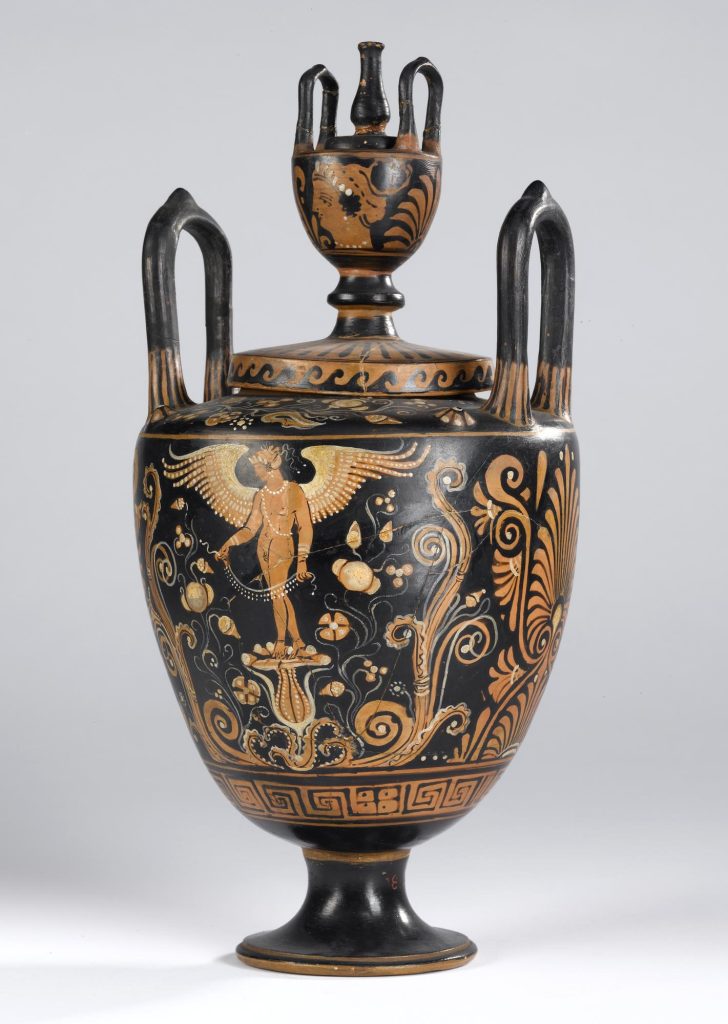
Before we go any further, what kind of object is this? Lebetes gamikoi (plural for lebes gamikos) are a type of Greek pot used at marriage ceremonies. The name is ancient Greek for ‘wedding vase’. These lebetes contained water which was sprinkled on the bride before she married her new husband.
Usually, the pots feature images from wedding scenes to complement the wedding ceremony they’re used at. You can see an example in the lebes gamikos on view at The Met Fifth Avenue in New York (below). So, these pots are linked to weddings and, by extension, to love between heterosexual people (weddings were always heterosexual in ancient Greece).
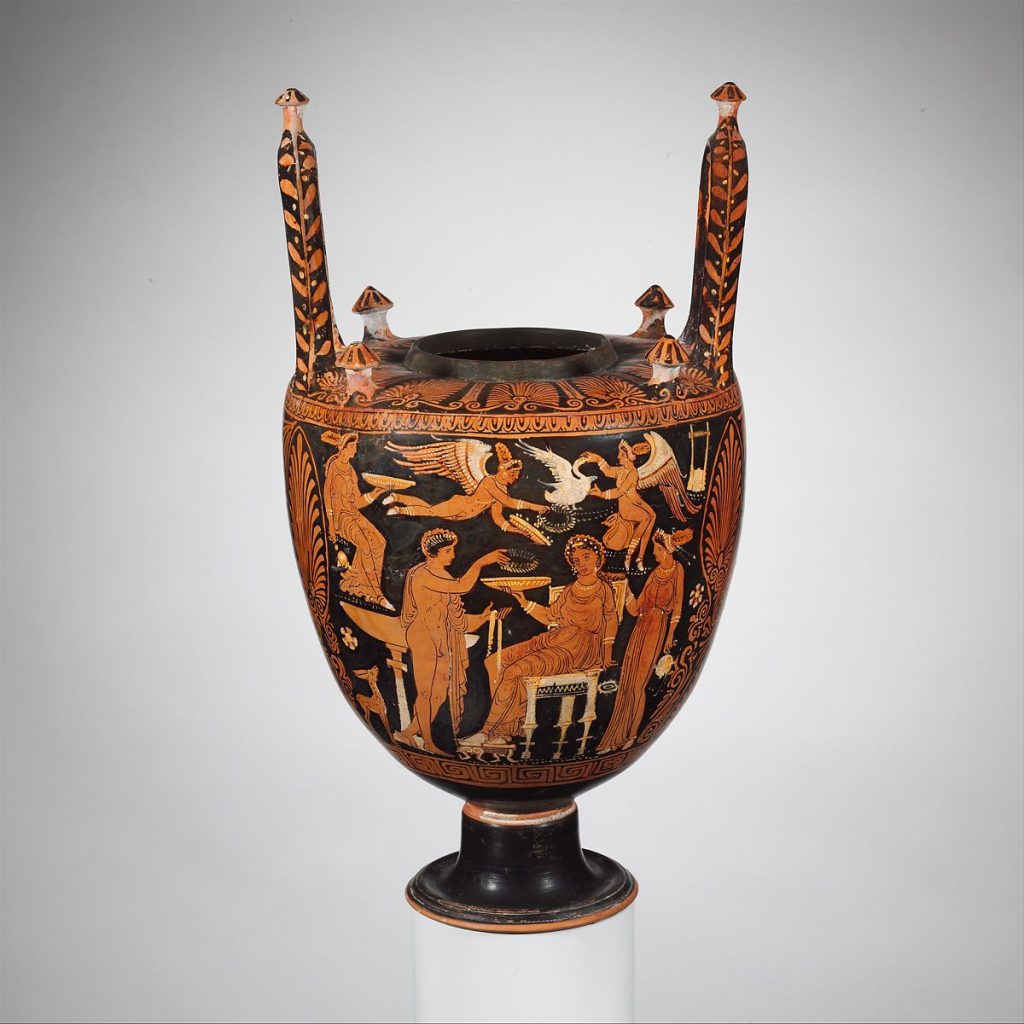
I’m struck by what it means to look at an object connected to straight love when you are not a straight person. I’m a gay man and the image of a heterosexual couple on a pot is beautiful, sure, but it doesn’t make me feel anything about myself. But when I look at Eros on the lebes in the National Museum of Scotland, my mind starts to spark with ideas about LGBTQIA+ history.
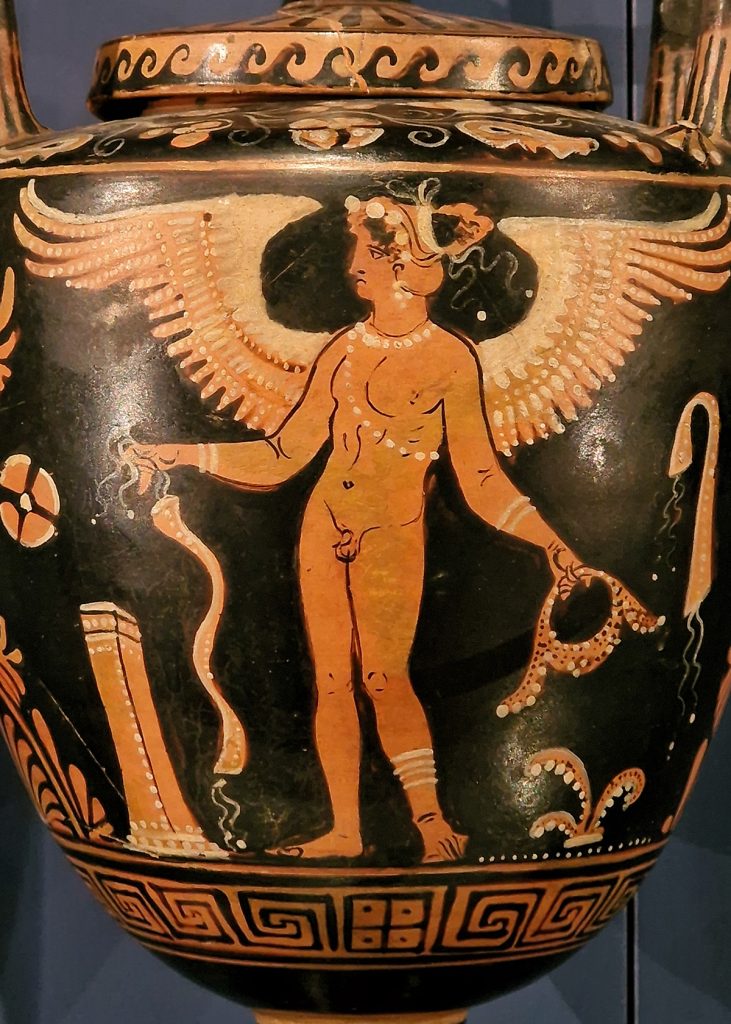
As you can see, not much is typically straight about this Eros and he certainly isn’t part of a wedding scene. He is slender, not especially muscly or masculine. His features are delicate and he is wearing jewellery. Most importantly, he wears a hat or bonnet with ribbons which makes his hair look chic and even feminine. As a gay or queer viewer of the Eros lebes gamikos, I find myself less interested in the object’s history as a marriage vase, and more interested in Eros himself.
I know Eros. I’ve met men like the lebes’ Eros dozens of times at Pride festivals and in gay villages. Eros is a twink. He likes beauty, the finer things in life and, as far as I can tell from this pot, has no interest in women. He is a gay icon. This Eros might not even appear male at first glance.
It is perfectly possible to look at the lebes gamikos and initially think that a beautiful young woman is depicted. Eros can look like many people in the LGBTQIA+ family, including but not limited to trans femmes, non-binary folk, or even cis people who blur gender boundaries. Stonewall’s list of LGBTQ+ terms might help if you aren’t familiar with some of these words.

Getting queer vibes from Eros is nothing new. Across the Mediterranean Sea in modern-day Jordan, around three centuries after the lebes gamikos in the National Museum of Scotland was made, the ancient Greek poet Meleager of Gadara wrote the following poem (all translations are mine).
If Eros didn’t have a bow, wings or a quiver
Anthologia Palatina 12.76
Or the fiery arrows of desire,
I swear by the winged god, you could never tell from
Appearance alone who was Zoilus and who was Eros.
Zoilus is the male lover of the poem’s narrator, who calls his boyfriend beautiful by comparing him to Eros. There are dozens of similar poems from the ancient world, gathered in the Anthologia Palatina, a collection of short poems in ancient Greek. So, Eros was a god strongly linked to queer love in the ancient world. Relationships between men in the ancient world are complex, but for more information, read James Davidson’s 2007 The Greeks and Greek Love: A Radical Reappraisal of Homosexuality in Ancient Greece.
Ancient poets recognised queer themes in artworks of Eros, just like me and other queer museum goers can do today. Meleager also wrote this poem about a statue of Eros by the famous Greek sculptor Praxiteles.
Praxiteles the sculptor of old made a delicate but lifeless
Anthologia Palatina 12.57
Statue, a dull copy of beauty,
Only giving the stone a shape; but today’s Praxiteles, magical maker of living creatures,
Sculpts out the triply cheeky Eros in my heart.
Perhaps this Praxiteles only has the same name, and his works are better than the older one,
Since he has remoulded not stone, but the breath of life.
I hope that he graciously sculpts my character, so that, having sculpted it,
He may build a shrine to Eros within my soul.
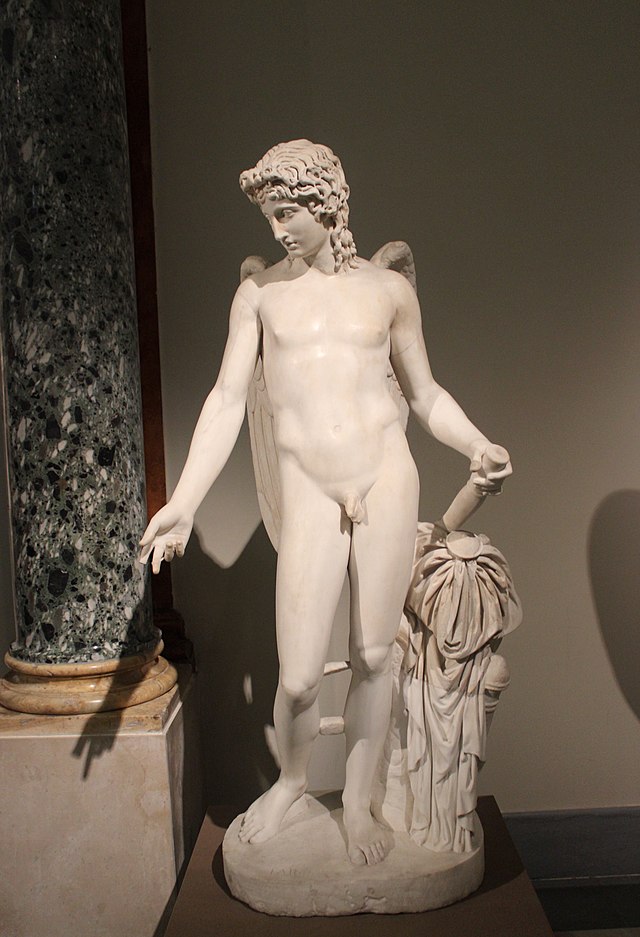
I’m not alone in recognising queer themes in the Eros of the lebes gamikos. Praxiteles lived around the same time that the lebes in the National Museum of Scotland was crafted. To Meleager, the statue he references was essentially a museum piece, something made hundreds of years ago by a famous artist. Meleager was able to see the sculpture (or hear someone describe it to him) and write a poem about it in which Eros was not just a powerful god of love, but a cheeky young man who was attractive to other men.
Queer people have often found that images of Eros, located in museums or at ancient sites, resonate with them. Eros is a sort of icon who is presented in ancient art in a way which allows people to interpret him from their perspective.
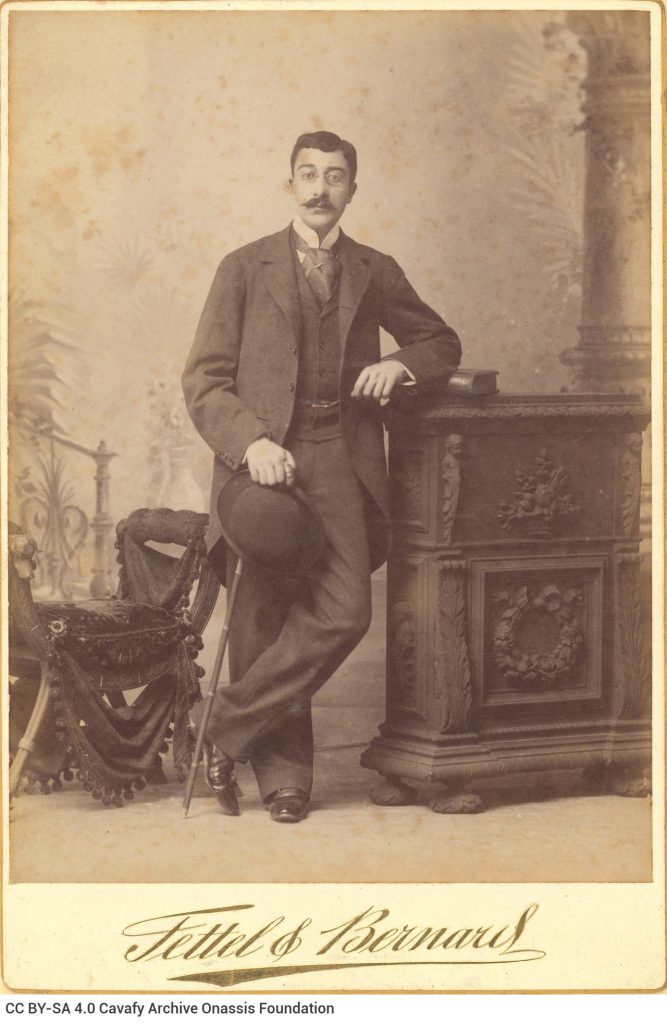
One such museum visitor was the modern Greek poet Constantine Cavafy, who lived in Alexandria in Egypt one hundred years ago. Cavafy was a gay man who regularly visited museums and frequently used Eros and/or statues of Eros as metaphors for the boyfriends in his poetry. One of my favourites is And I gazed so much.
And I gazed so much at beauty,
And I Gazed So Much
That my vision is full of it.
The lines of a body. Red lips. Limbs of pleasure.
Hair like it was taken from a Greek statue:
Always beautiful, although it is uncombed,
And it tumbles, a little, in front of white foreheads.
The faces of love, just like my poetry
Desired them… In the nights of my youth,
Met, secretly, in my nights…
Here, Cavafy’s beloved (like Praxiteles’ earlier) is described as beautiful through the traits he shares with a Greek statue. Ancient Greek art has become a way for queer people to speak about their desires.
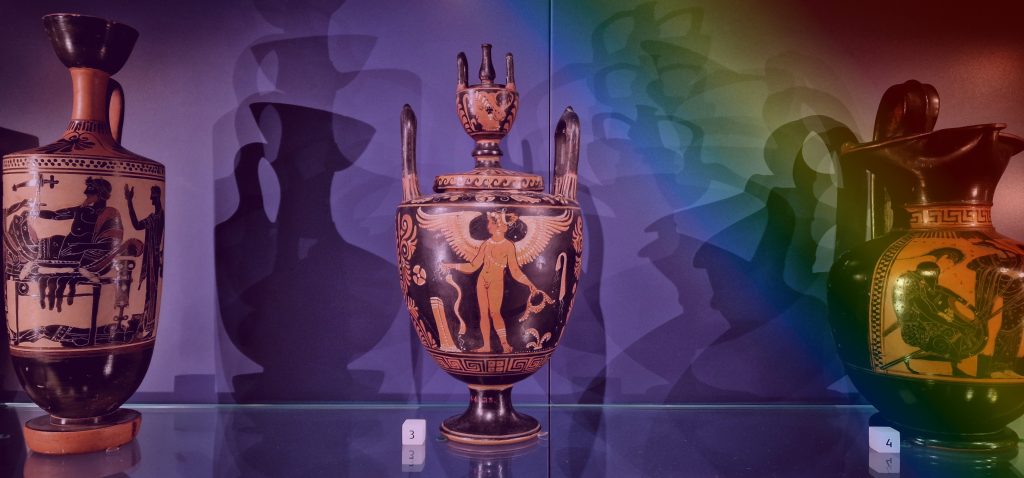
I want you to imagine that you are walking around Level 5 of the National Museum of Scotland. You see a lebes gamikos with Eros on it. What universes of queerness could this object open for you?
Joe Watson (he/him/his) is a Queer Classicist who has just submitted his PhD at Durham University. You can find him on Twitter.
LGBTQIA+ stories have often been left out of mainstream history and we are keen to make them more visible through stories told by our objects, LGBTQIA+ voices in the museum and by bringing in external perspectives. Explore the stories so far.
And if you want to help us tell these stories, send us a pitch!
